A Timeline history of the Violin Bow - from c. 1600 - 1800
... the sources in detail ...
Francesco Geminiani (1687 - 1762)
The Art of Playing on the Violin (London, 1751)
You can find an online version of the complete facsimile on imslp in English (along with a later heavily altered French re-write).
The Art of Playing the Violin by the English resident Italian violinist Francecso Geminiani is one of the most important treatises concerning baroque violin playing.
Geminiani's history is not completely simple - born in 1687 in Lucca, it seems likely that he studied with Corelli and Scarlatti in Rome from 1704 - 1706. After being demoted in Naples from violin to viola for an inability (or refusal) to play in time (according to Charles Burney), Geminiani moved to England in 1714. In spite of reported success as a violinist in his early days in England, his public appearances were few - and became fewer. History (already presaged by Burney and Hayes) does not treat him well, although he was apparently a successful teacher - with pupils such as Dubourg, Avison and Festing achieving considerable fame.
The Art of Playing on the Violin is a really useful snapshot, if you like, of mid 18th. century musical taste and technical know-how. About the bow, Geminiani is wonderfully precise, in terms of technique, bowing (order of up and down) and expression. It's all to be read, understood and acted upon.
All in all, spread throughout the tutor, we have important advice about bowing technique, bowing direction (he clearly dislikes the prevalent "rule of the down-bow") and types of strokes appropriate to different notes lengths and tempi.
Here are the relevant passages. First, his opening comments about the bow, with fairly precise (for the time) technical instructions, and observations about the messa di voce (definitely worth comparing with Tartini's observations in his letter):

In his instructions for Examples VIII and Example IX - (scales and variations thereon) - he is quite precise about bowing, and use of the bow:
Ex VIII - "Here it must be observed, that you are to execute them by drawing the bow down and up, or up and down alternately; taking Care not to follow that wretched Rule of drawing the Bow down at the first Note of every Bar"
Ex. IX "Again you must be careful ... in bowing to employ the Wrist much, the Arm but little, and the Shoulder not at all."
Then comes Example XVI (and Example XVII, not shown here) where Geminiani presents some extremely useful exercises in managing articulation:

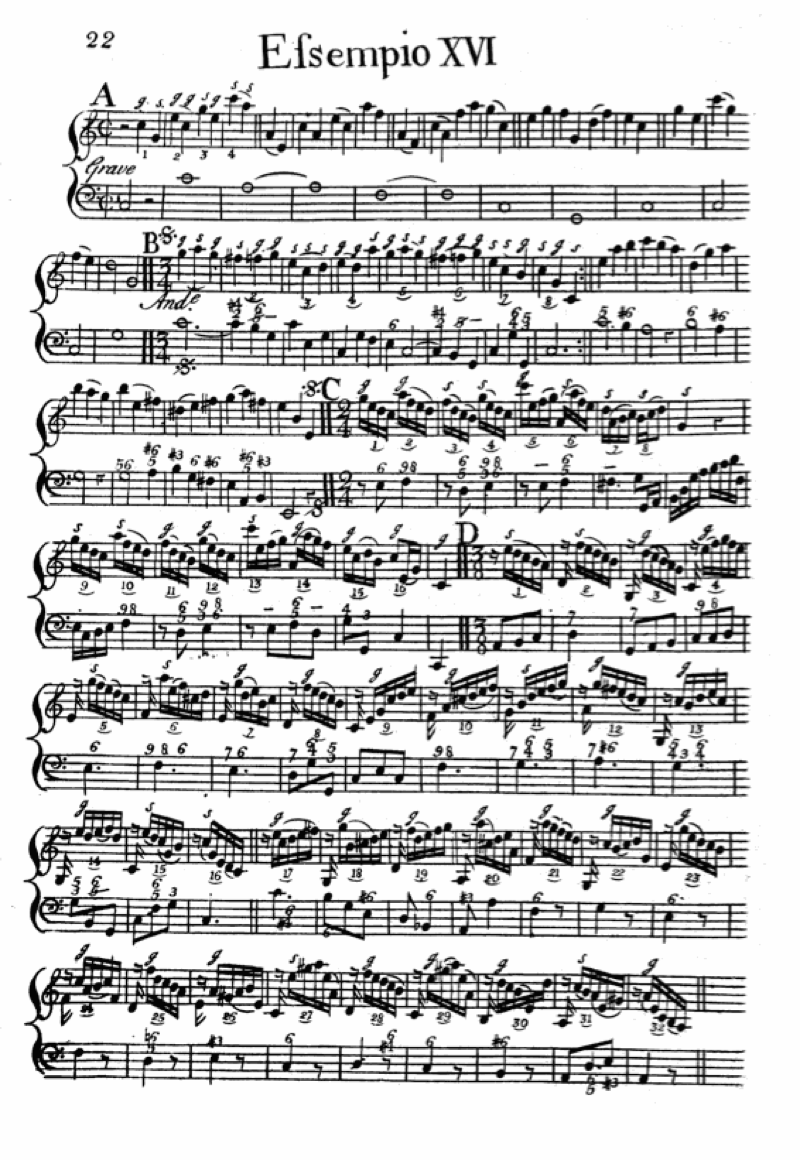
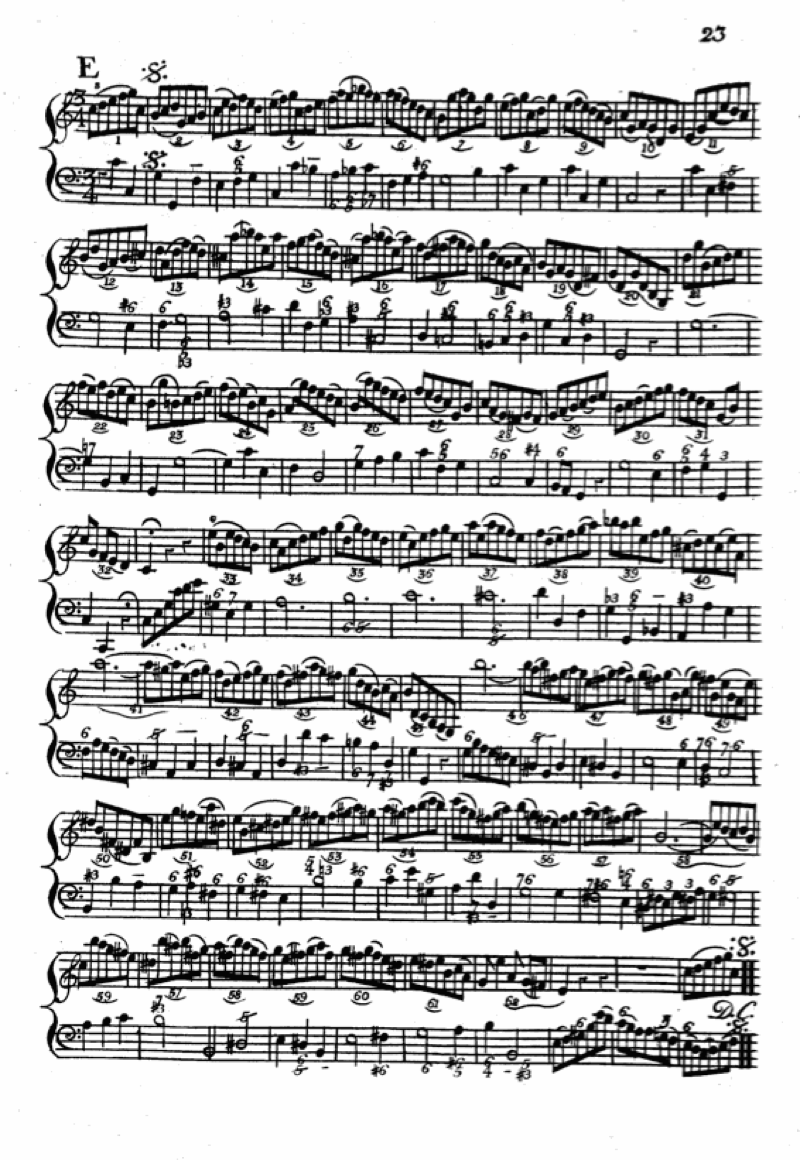
Two more essential extracts -- First Example XX:

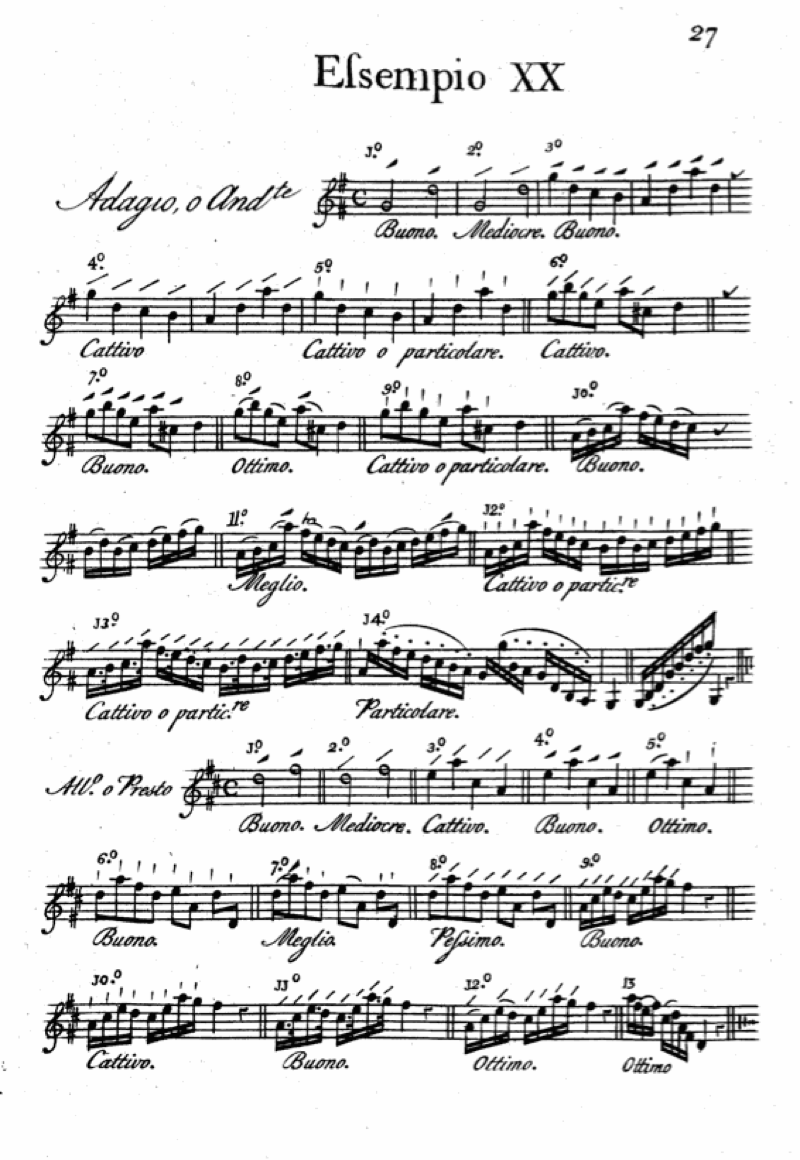
-- and then last but not least, Example XXIV:
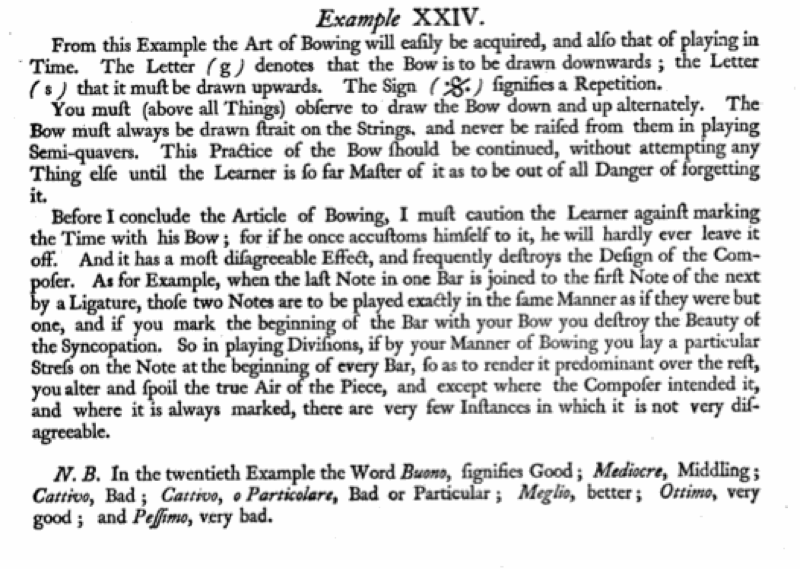
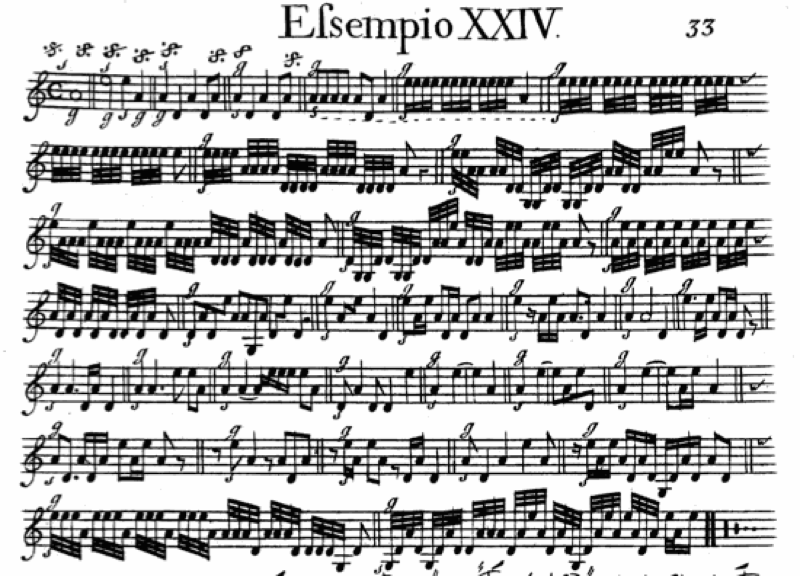
Here are the relevant passages. First, his opening comments about the bow, with fairly precise (for the time) technical instructions, and observations about the messa di voce (definitely worth comparing with Tartini's observations in his letter):

Ex VIII - "Here it must be observed, that you are to execute them by drawing the bow down and up, or up and down alternately; taking Care not to follow that wretched Rule of drawing the Bow down at the first Note of every Bar"
Ex. IX "Again you must be careful ... in bowing to employ the Wrist much, the Arm but little, and the Shoulder not at all."
Then comes Example XVI (and Example XVII, not shown here) where Geminiani presents some extremely useful exercises in managing articulation:



Two more essential extracts -- First Example XX:


-- and then last but not least, Example XXIV:

